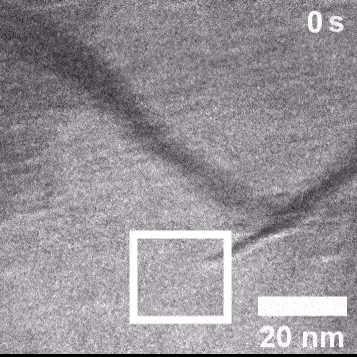Combining Machine-Vision Software and Environmental TEM
Generate relevant in situ TEM data that complements bulk scale results. Protochips’ Atmosphere AX provides a window through which to observe the nanoscale changes and processes responsible for a material’s properties under its active, working conditions. With Atmosphere AX, you can easily generate relevant and realistic environments safely inside the TEM to develop a more robust understanding of processes such as catalytic activation, operation, and degradation.
More than just an in-situ hardware solution, Atmosphere AX incorporates our first-of-its-kind machine vision technology, AXON Synchronicity, enabling unprecedented image stabilization, metadata integration, and collaborative analysis. Are you ready to take the next step in elevating your in-situ gas cell research? Atmosphere AX is designed to advance the in-situ TEM experience all the way from sample preparation to publication, with fewer iterations and a focus on generating results.
System components
A visual overview of all included components
Click here to see all components of the systemBrochure
Read all about the Atmosphere AX system in our brochure
Click here to download our brochureGas Phase TEM Library
Take a look at the research published with Protochips' liquid cell systems.
Click here to go to the bibiographyIn situ gas cell research examples
with the Atmosphere AX system
with the Atmosphere AX system

Catalyst Synthesis/Reduction/Operation
Catalyst synthesis consists of multiple steps, such as drying, calcination and reduction. The synthesis of phyllosilicates, for example, exhibits high control over particle size and shape. This study highlights the mechanism and kinetics of nickel particle formation on silica supports.
Turner, S.J. et al. (2023) J. Phys. Chem. C, 127, pp. 7772–7783

Fuel Cells
In order, to realize improvements in the activity, efficiency, and stability of protein-exchange membrane fuel cells, a better mechanistic understanding of the mechanisms that control the growth of oxygen reduction reaction (ORR) catalysts is required. In this research, the synthesis of modified hydrogen-assisted platinum nanowires was visualized using the Atmosphere AX system.
Ma, Y. et al. (2017), Adv. Mater., 29, 1703460

Corrosion
Corrosion is a significant problem for infrastructure, for both bulk and nanoscale functional nanomaterial. The Atmosphere AX system can be used to study corrosion of nanoparticles or FIB lamella under their native operating environments.
Du, J.S. et al. (2021) Adv. Funct. Mater., 31, 2105866

Batteries
Lithium based materials are among the most promising candidates for next-generation solid-state batteries. This study follows the formation and growth of lithium metal under an argon atmosphere. EELS and diffraction were used to confirm the growth of lithium salts.
Luo, X. et al. (2021) ACS Appl. Energy Mater., 4, 7226–7232

Molecular Sieves
Zeolites are used for many applications, such as molecular sieves. Their properties are determined by their pore size and shapes, creating preferred binding sites for certain molecules. Here, the Atmosphere AX system was used to introduce vapor (benzene) and obverse the changes in the zeolite cage structure during benzene adsorption.
Xiong, H. et al. (2022) Science, 376, 491–496

Pyrolysis
Pyrolysis is used as a synthesis method for many different materials. During pyrolysis, a material, such as the zeolitic imidazolate framework shown here, is heated to extreme temperatures and under an atmosphere to produce a catalyst material.
Hsiao, K.-Y. et al. (2023) ACS Applied Nano Materials, acsanm.3c01669
TEM Processing Software: AXON Studio
AXON Studio is an intuitive processing software for managing, reviewing, analyzing and publishing TEM images and metadata in your office or workspace. The software can be downloaded free of charge and operates by linking the TEM and in situ data to your images. AXON Studio can be used to plot, filter and publish videos, images and raw data. The AXON Studio software works hand-in-hand with the AXON Synchronicity TEM software which is linked to the microscope. This together forms the AXON platform.

